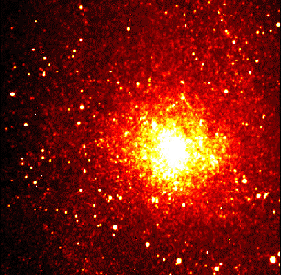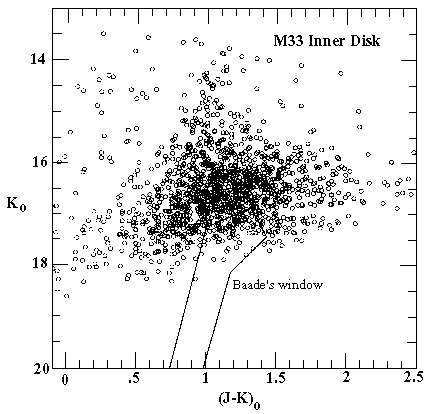

Recently, the detection of a weak bulge component has been reported for the Local Group galaxy M33 on the basis of near infrared H-band photometry. In addition, it has been claimed that there must have been a very recent star formation episode of <1 Gyr in the inner disk (and bulge) of M33. We report here new, independent JHK photometry of the central regions of M33 using a two-channel IR camera system. Typical seeing conditions were 1.5" with a scale of 0.68" per pixel. Color-magnitude diagrams (CMDs) and bolometric luminosity functions (LFs) are derived from the JHK images for the central 7.6'x7.6' of M33. We compared two regions: a central "core" region, which might contain a bulge component, and a surrounding annulus which we call the "inner disk" region. The core region is defined as an annulus between radii of 45" to 90" centered on the nucleus, and the inner disk lies from this outer radius to the extent of our images. Tests show that incompleteness is significant for stars fainter than Mbol ~-4.0, and that confusion due to over-lapping stars is a very serious limitation near the nucleus. The CMDs and LFs show that there exists a population of luminous stars in the central region of M33 which is substantially brighter than the brightest giants found in the Galactic bulge. The M33 LF is also brighter than those of the M31 bulge and M32 giants. A K-S test confirms that the LF for the central core region is essentially identical to the surrounding inner disk LF statistically, with a steep decrease or "break" in number of stars at Mbol ~-5.3. If the very crowded nuclear regions are not eliminated from the LF, then the break appears to occur at brighter magnitudes and an apparent difference between the two LFs is created. Our JHK photometry does not show any clear transition between the inner disk and the central core region to within 45" of the M33 nucleus. Down to the confusion limit, our study does not therefore reveal a bulge component, even after correction for the bluest stars. The luminous stars observed in the central core region are simply contaminated by the inner disk population.
Reference: I.S. McLean and T. Liu, 1996, ApJ, 456, 499. Very Luminous Giant Stars in the Central Region of M33

|
The Ko vs (J - K)o Color-Magnitude diagram for the measured stars in the M33 inner disk which are outside the 1.5' radius from the nucleus. The locus of giant stars in Baade's window are also plotted (closed solid line region). |